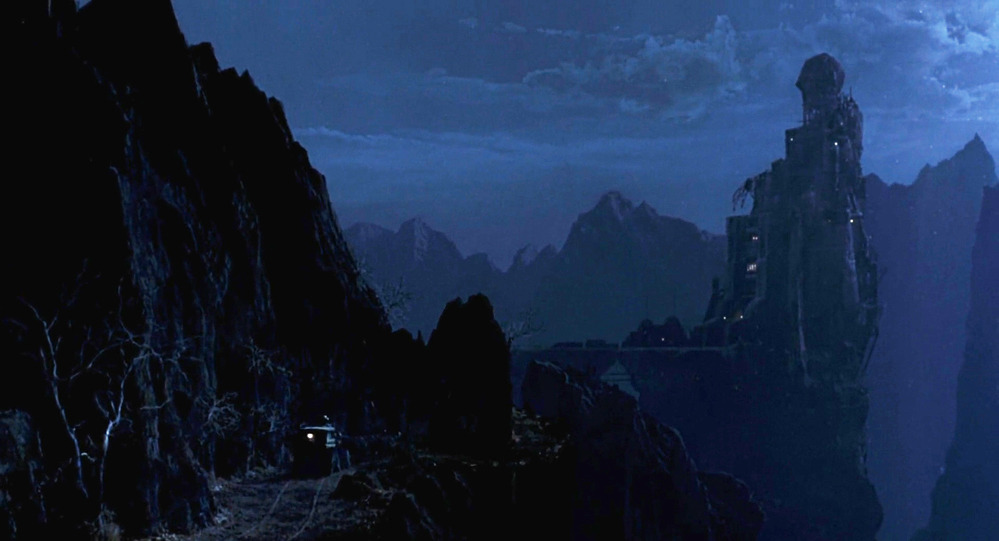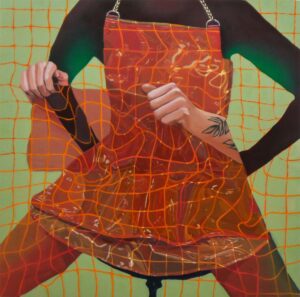Terror. Horror. Same thing, right? Not so much. Terror is the weird noise you hear in the middle of the night. Horror is the body you find the next morning.
There are examples of pure horror in Gothic literature—like Matthew Lewis’ maniacal The Monk—but most people associate the genre with doomed romance, damsels in distress, and crumbling haunted houses. But for every dungeon filled with moldering bodies, there are at least a handful of houses that reveal their terrors in creeps, crawls, and candlelight.
Below, peek behind the curtains of our favorite literary haunted houses and get tangled up in moving wallpaper, murderous plots, and lots of long, bloody dresses.
The House of Usher, 'The Fall of the House of User'
Notable for the implied incest between Usher siblings Madeline and Roderick, Edgar Allen Poe’s gruesome masterwork is a stylish blend of slow-decaying terror and bloody, buried-alive horror. That the cursed house eventually crumbles to the ground under the weight of its own secrets should come as a shock to absolutely no one who’s been paying attention. Guillermo del Toro’s Gothic romance Crimson Peak, with its own “unnatural sympathies” between siblings, wouldn’t be around without it.
Thornfield, Jane Eyre
In the grand tradition of grim bachelors who own spooky old houses, Mr. Rochester keeps a locked attic wing at Thornfield where his governess, Jane, is never to go. But Jane is a pluckier heroine than the Gothic genre often allows, and when she hears cackling laughter emerging from the attic late at night, things quickly escalate from strange to downright weird in one of the most cathartic–and fiery–denouements ever put to paper.
The Colonial House, ‘The Yellow Wallpaper’
Though you won’t find any corpses in Charlotte Perkins Gilman’s critique of patriarchal forces, there are plenty of implied bogeymen hiding just beneath its thin, yellowing veneer. Forced to take a “rest cure” for what her physician husband calls a “slight hysterical tendency,” the narrator, through a series of journal entries, documents her own descent into madness as the occupant of the room with the yellow wallpaper. Is it her imagination, or is there a woman trapped under the swirling patterns? That her husband is the one who faints at the end while she steps over his body, preoccupied with her newfound freedom, feels oddly triumphant.
Manderly, Rebecca
As an opening line, “Last night I dreamt I went to Manderley again,” could be mistaken for nostalgic ruminating on the part of du Maurier’s unnamed narrator. But the young woman’s dream is more like a nightmare: The specter of Rebecca, the first Mrs. DeWinter, haunts Manderley and everyone who comes in contact with it. There was this boating accident, you see…
Dracula’s Castle, Dracula
Home of the infamous count and his brood of blood-sucking succubi, no list of haunted houses would be complete without Dracula’s castle. A far cry from the ugly, skulking creatures of earlier vampire folklore, Stoker’s count is all courtly manners and debonair menace capped off by cape and top hat. Though protagonist Jonathan Harker finds himself an unwitting captive in the Transylvanian castle, by the time Dracula travels to London to make a few more lady vampires, we’re completely under his charms and follow him eagerly back to his castle for the bloody conclusion.
Bluebeard’s Castle, ‘The Bloody Chamber’
Angela Carter’s work has always been preoccupied with the dark fantasies of our favorite fairy tales, and her riff on the tale of Bluebeard is no exception. Our heroine is married off to a mysterious, thrice-widowed gentleman who whisks her off to his extravagant seaside castle. She’s given a ruby choker, plenty of sadistic pornography, and explicit instructions forbidding her entrance to a certain locked chamber in the house. When her husband leaves on a business trip, she discovers the depths of his depravity and, crucially, why he’s been widowed so many times.
The House on Ash Tree Lane, ‘House of Leaves’
To describe this unconventional genre-bender in a measly paragraph verges on the impossible, but here goes nothing. Like any postmodern novel worth its salt, House of Leaves cobbles together a hodge-podge of narrative lines, but the main thrust is the strange story of the Navidson family home on Ash Tree Lane. Steer clear of its inexplicably appearing doors, corridors that lead nowhere, and staircases that spiral without end, or you might end up like Mark Z. Danielowski’s unfortunate characters: dead, insane, or driven to murder.
The Castle, The Keep
Jennifer Egan’s piercing gem of a novel is another recent foray into postmodern Gothic. Her tale of a crumbling Eastern European castle and all its attendant curiosities holds water with the best of classic Gothic fiction, going so far as to marry all the standard genre tropes–a mysterious baroness, strained familial relationships, and an ancient, fully functioning torture chamber–with an intertwining hall-of-mirrors structure.



